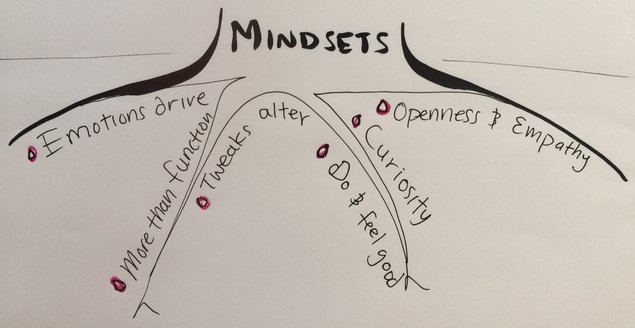An introvert's guide to creating things people want
Understanding people and how they want is challenging. We have more information than insight and less time than ideas. Let's tackle those!
Ended
Low-hanging fruit are delicious -- they're strategies that give high return for relatively little effort.They're conceived, tested, and shared by others. They're readily available to us.
However, low-hanging fruits don't account for our customer, business, team, or person. They worked in specific conditions, for specific needs -- both of those change.
To produce our own fruit in changing conditions, to be sustainable, we can growour trees!
Trees are metaphorical bundles of mindsets, abilities, and practices that deepen those abilities. Mindsets make practicing abilities more purposeful and passionate.
While fruits are context-specific strategies, trees are transferrable abilities. Trees are versatile, fundamental skills that can be used over and over in different contexts.

This "fruit" and "tree" concept underlies the structure of the book.
For each business topic, we explore low-hanging fruit and why they work, and follow-on with mindset and practices to grow a few transferrable abilities.
For example: Here's one of the trees!

This "Experience Design" tree produces fruits for several of the 5 major topics (pricing & value, intuitive product experiences, effortless customer service, spotting business opportunities, and cultivating culture).
and more.

Each tree has two main parts: mindsets and practices.
Mindsets are the "roots" -- they are beliefs, truths, attitudes that determine what we filter in from the "soil" or environment. Some mindsets are backed scientific research, while others come from theory or personal experience.
You've heard of the Fixed Mindset versus the Growth Mindset -- those who are Fixed believe that intelligence is pre-determined and thus their current failure represents their potential; those who are Growth believe that intelligence is built little by little and thus their struggles represent their learning and improvement. Who excels?
Similarly, strong mindsets allow for stronger growth in abilities.

For example, in the "Experience Design" tree, mindsets include:
- Decision-making and memorability are driven by emotions
- Simple tweaks alter how something is experienced
- Openness & empathy are required for understanding other's experiences
- Other's experiences of my work is different from my own...and I'm curious to learn about them
- People not only want to achieve their goals, they need to feel a certain way in the process
- Noticing my own, everyday experiences deepens my ability to understand others

Mindsets lend purpose and passion to action.
The action is to practice abilities, and put them to good use!
Here's a few transferrable skills from the "Experience Design" tree that we'll practice:
- Opportunity spotting via bad experiences or complaints (mine or other's)
- Asking, listening, sensing in conversation with others
- Looking at problems through a holistic (versus functional) lens
- Noticing what impacts my experience of daily life
- Analysing what makes something significant or valuable to identity
- Experimenting with tiny tweaks
So, I wonder: what "trees" are you growing?
How are you growing them? What mindsets are they rooted in?
Angela O
angelaognev@gmail.com